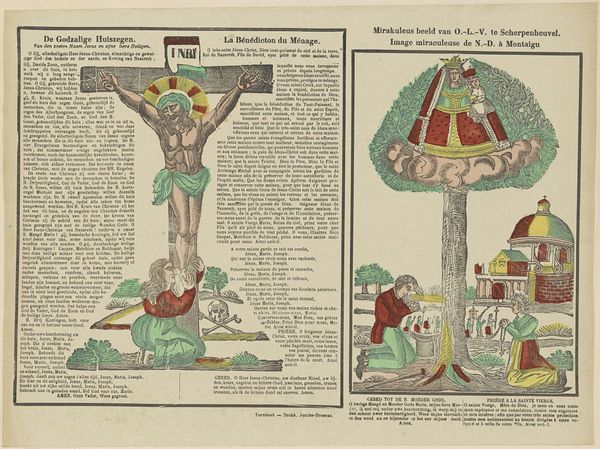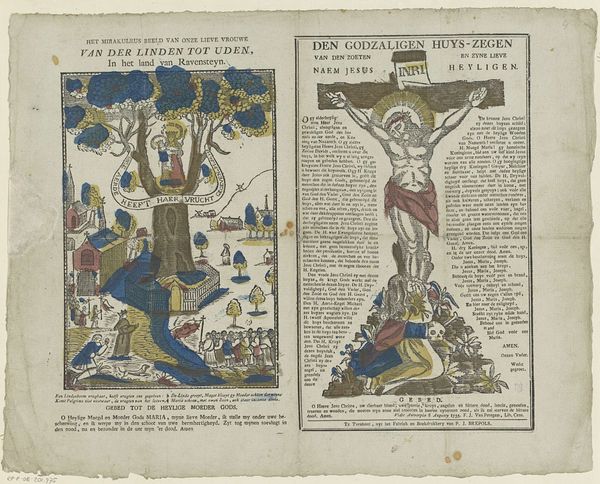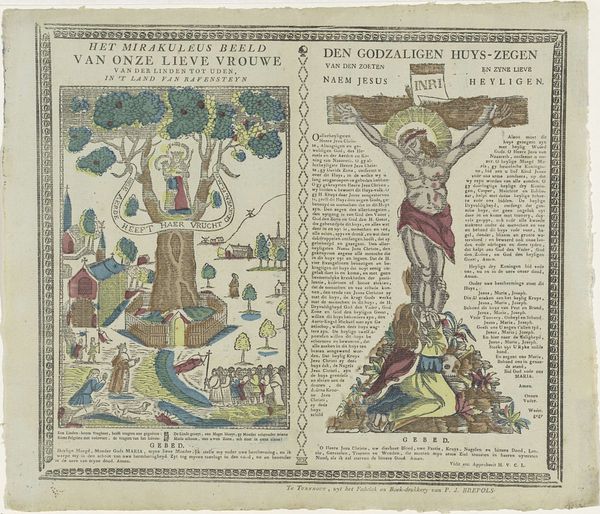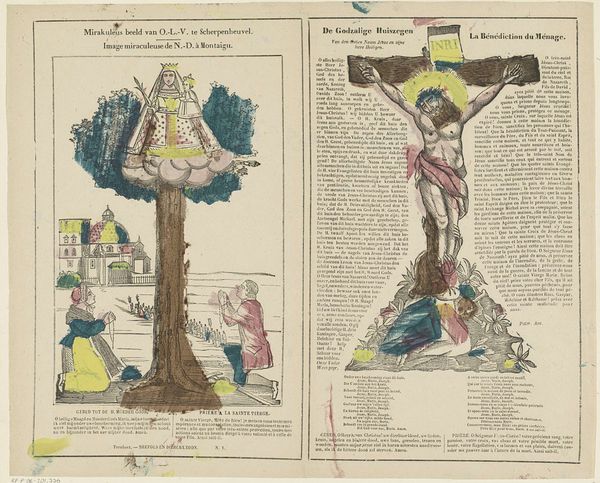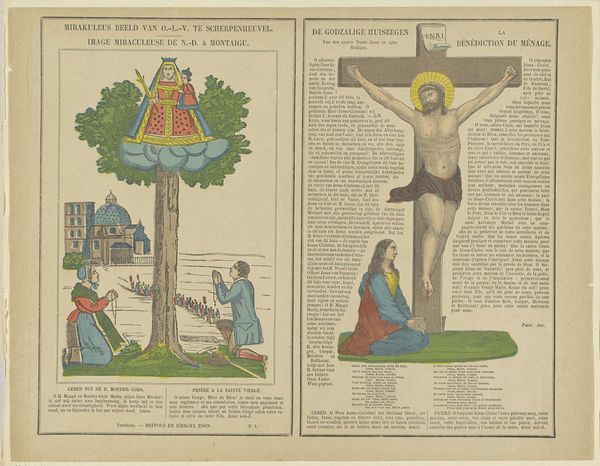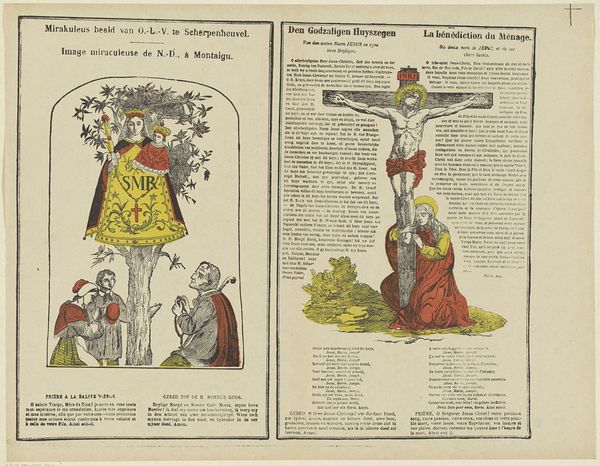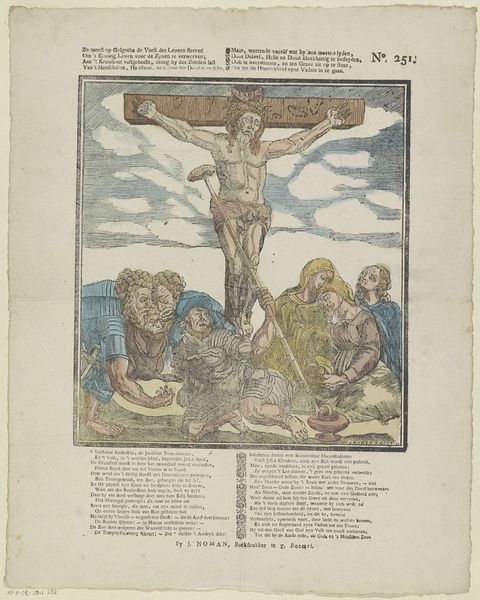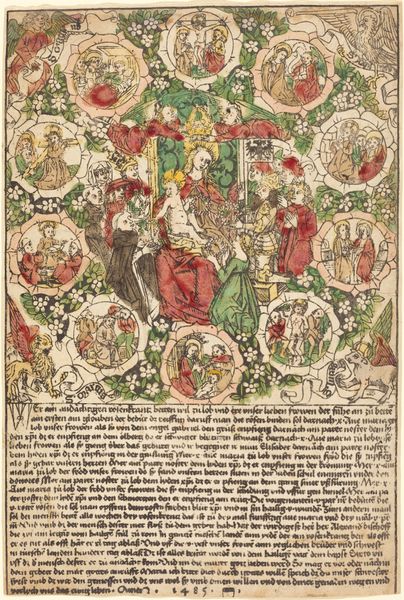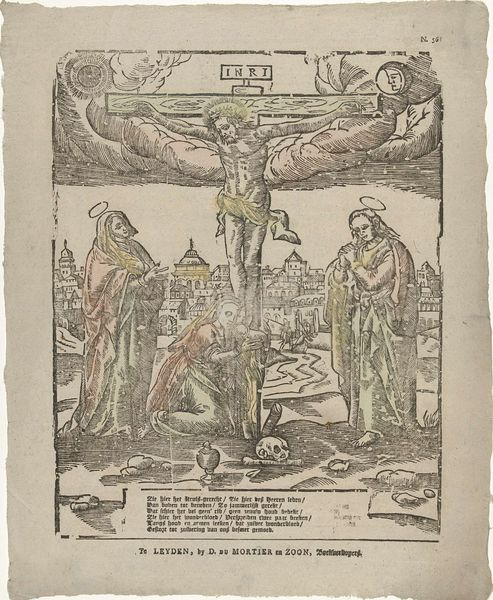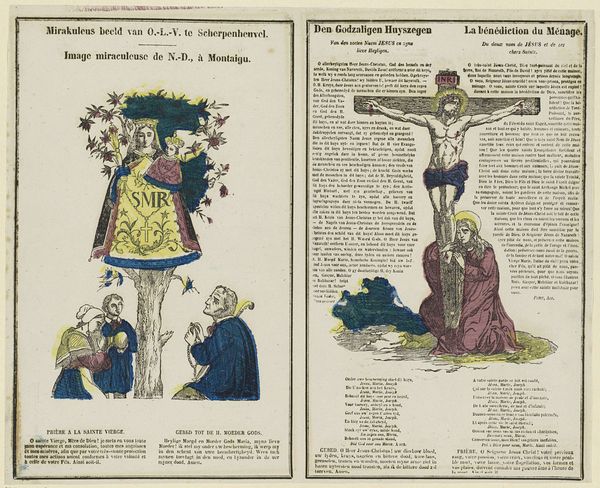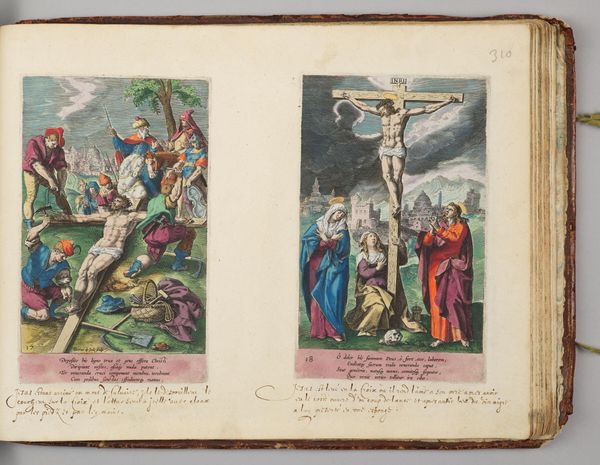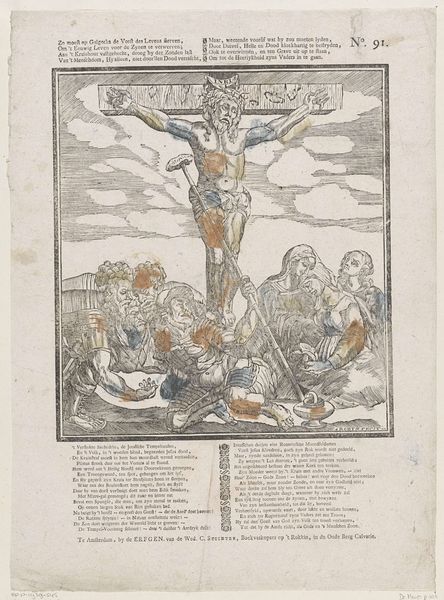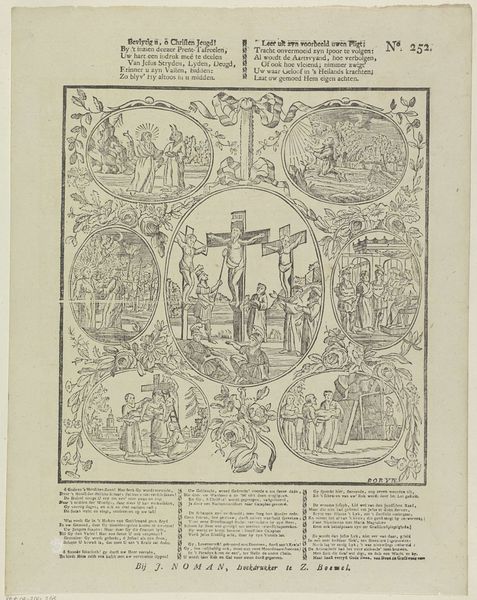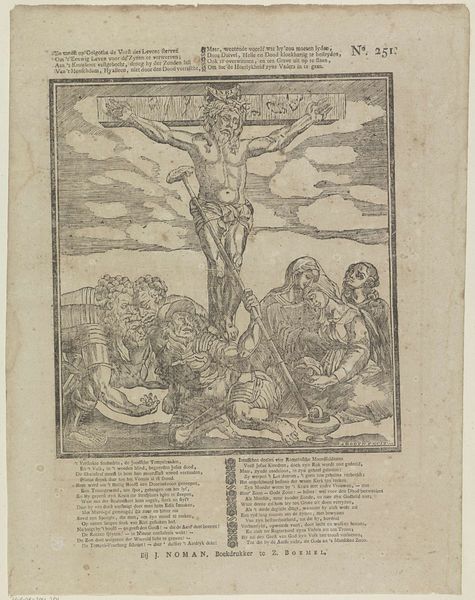
De Godzalige Huiszegen. / La Bénédicton du Ménage. / Mirakuleus beeld van O.-L.-V. te Scherpenheuvel. / Image miraculeuse de N.-D. à Montaigu 1866 - 1902
0:00
0:00
print, engraving
#
allegory
#
narrative-art
# print
#
folk-art
#
history-painting
#
engraving
Dimensions: height 348 mm, width 440 mm
Copyright: Rijks Museum: Open Domain
Curator: This is a rather striking piece, isn't it? The print before us, titled "De Godzalige Huiszegen / La Bénédiction du Ménage / Mirakuleus beeld van O.-L.-V. te Scherpenheuvel / Image miraculeuse de N.-D. à Montaigu," likely dates between 1866 and 1902 and is the creation of Franciscus Antonius Beersmans. An engraving, if I’m not mistaken. Editor: Immediately, I’m struck by the dual composition, how the artist chose to organize and contain two narratives or symbolic domains on a single sheet. A stark duality—sorrow and adoration perhaps. Curator: Indeed. Let's consider the composition of each half. On the left, the stark representation of Christ on the cross dominates, a figure of sacrifice looming over supplicants. Its brutal realism starkly contrasts the somewhat cartoonish style of the iconography present in the other image on the right side. Note the arrangement of text blocks. How does this frame the viewer's understanding? Editor: Precisely. The left's iconography is dominated by symbols of death – the skull and crossbones prominently displayed near those who mourn or pray. Conversely, the right presents a vertical ascent from earthly supplication towards the divine image of the Virgin, positioned above a tree, which could itself carry Edenic symbolism of renewal. I would imagine those prayers go toward her. Curator: Interesting observation! The linguistic framing here is noteworthy as well; observe the contrast of the Dutch "Godzalige Huiszegen" with the French "Bénédiction du Ménage." And further along, each phrase is echoed again. It certainly serves a function here – one could argue this division mirrors a cultural or linguistic division inherent in Belgian identity at the time. How fascinating, and clearly, how integral it must be in comprehending this artifact. Editor: And thinking more critically about that doubling, consider how the mirroring acts beyond cultural identifiers to deepen faith. On one side a stark lesson from Christianity; and on the other, a sort of intercession to Mary. So much meaning rendered through mirroring itself. What are we meant to believe if the two go hand-in-hand? Curator: I must agree with you about this work containing layers. Examining how Beersmans weaves together the sacred and secular makes me consider the social and aesthetic currents circulating during the era, its attempt to synthesize faith and identity on paper. Editor: A wonderful reminder to keep interrogating even seemingly simple images. Thank you.
Comments
No comments
Be the first to comment and join the conversation on the ultimate creative platform.
